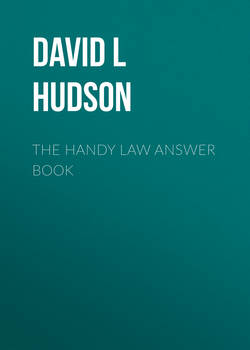Читать книгу The Handy Law Answer Book - David L Hudson - Страница 102
На сайте Литреса книга снята с продажи.
When does speech cross the line and become a true threat?
ОглавлениеTrue threats also are not protected by the First Amendment. Rhetorical hyperbole—even if the speaker uses harsh and colorful language—generally will not constitute a true threat because there is no serious intention to cause harm to another. The U.S. Supreme Court applied this principle in the case of Watts v. United States (1969), which involved a young African-American war protester. Speaking in a crowd, the young man said that if the government made him go with his “black brothers” to Vietnam that the first person he would put in the “scope of his rifle was L.B.J.” referring to U.S. President Lyndon Baines Johnson. The Court determined that this was mere political hyperbole, rather than an actual threat.
In Virginia v. Black (2003), the Court offered a more concrete definition of a true threat in the context of a case involving cross burnings by Ku Klux Klan members. The Court determined that true threats “encompass those states where the speaker means to communicate a serious expression of an intent to commit an act of unlawful violence to a particular individual or group of individuals.”
